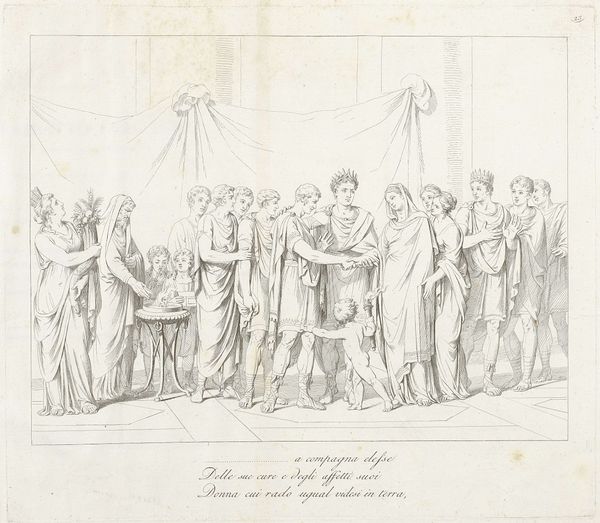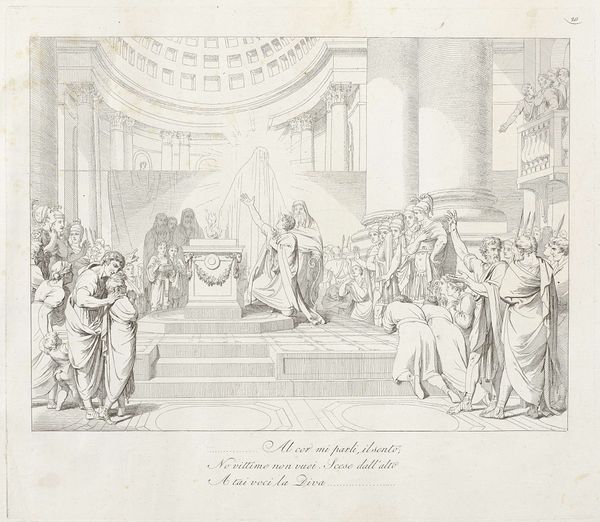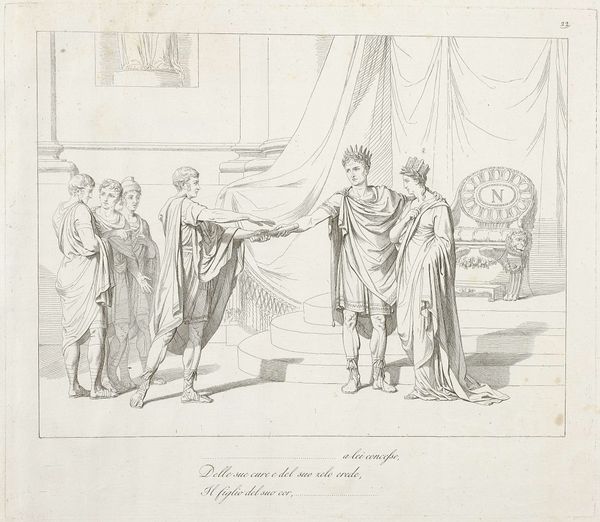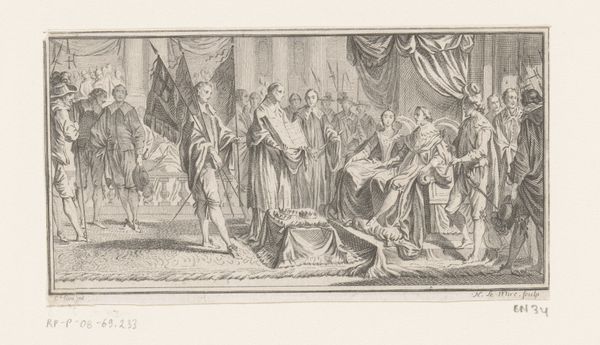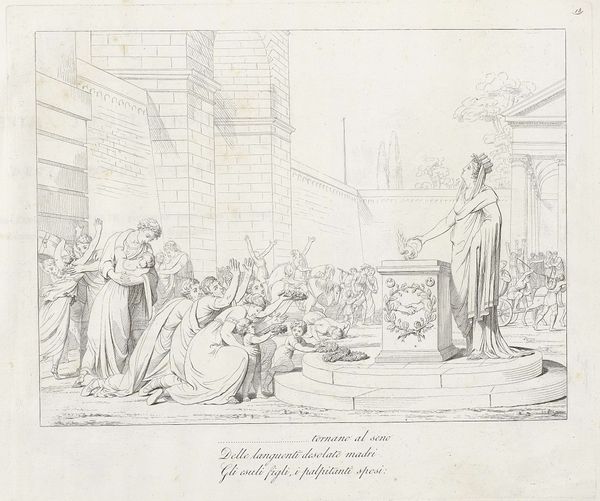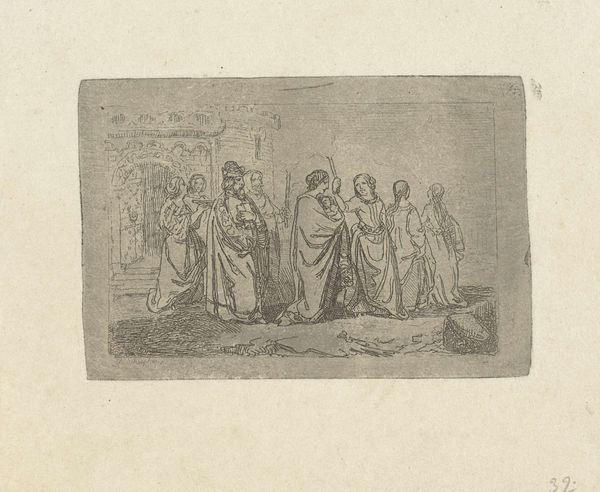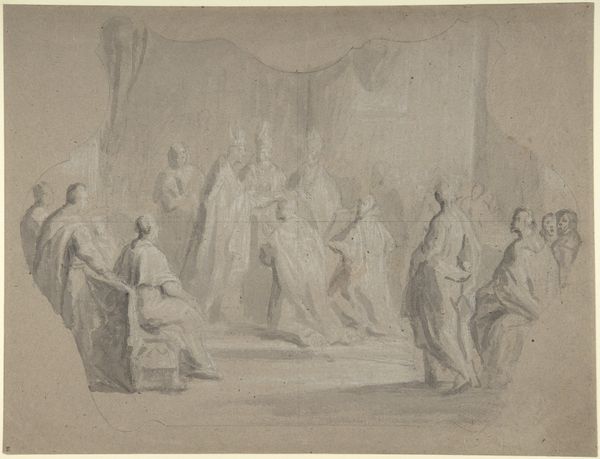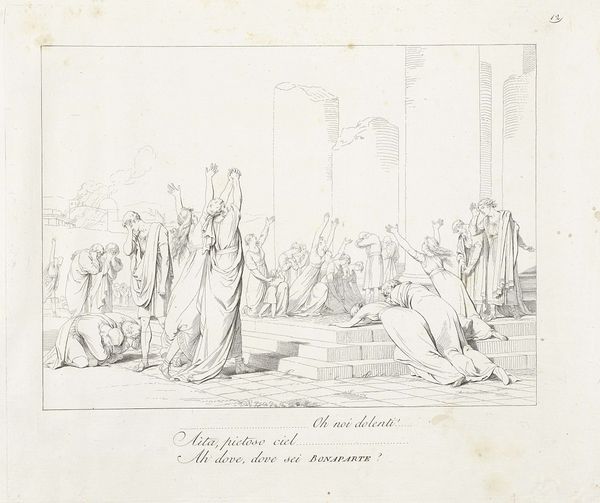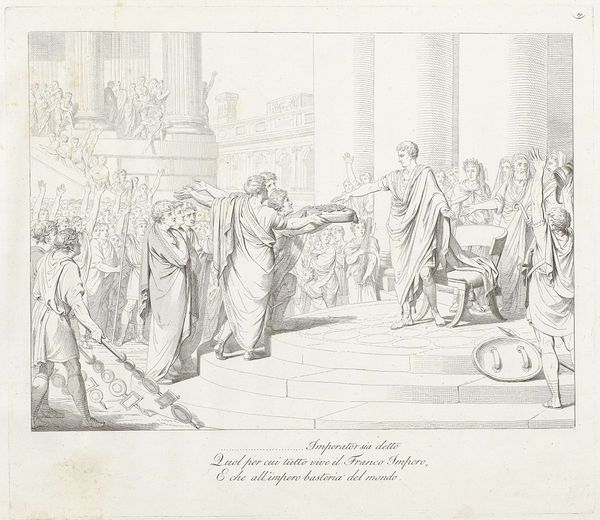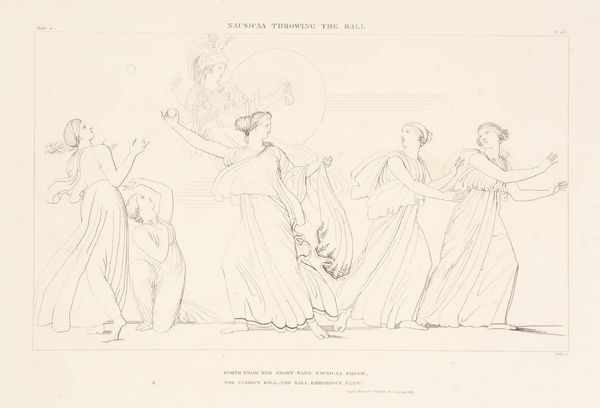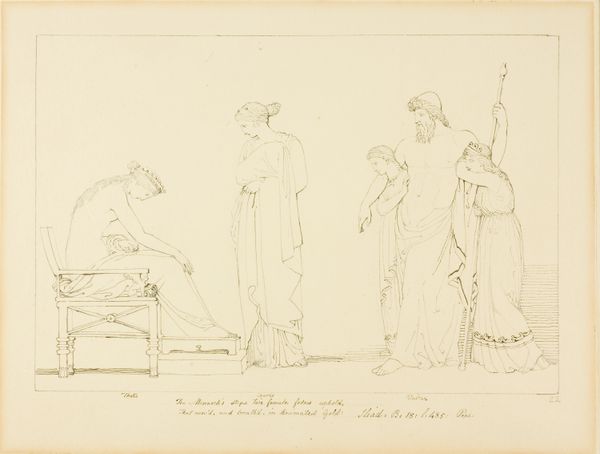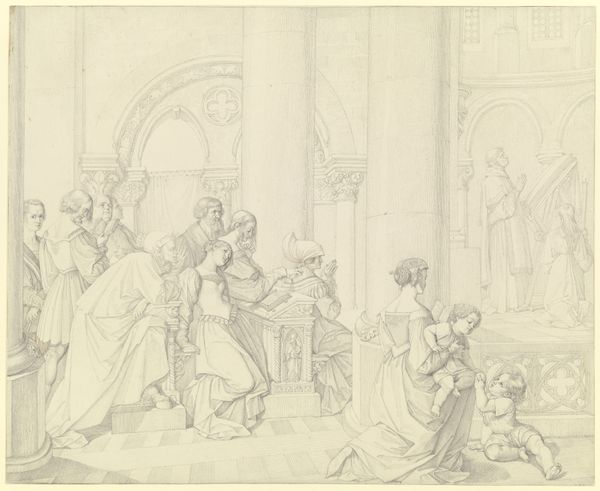
#
comic strip sketch
#
imaginative character sketch
#
quirky sketch
#
sketch book
#
personal sketchbook
#
idea generation sketch
#
sketchwork
#
sketchbook drawing
#
storyboard and sketchbook work
#
sketchbook art
Dimensions: height 332 mm, width 382 mm
Copyright: Rijks Museum: Open Domain
Curator: Welcome. Before us, we have Teodoro Matteini’s work from 1808, entitled "Vrouwelijke personificaties bieden de tronende Napoleon een kroon aan," which translates to "Female personifications offer the enthroned Napoleon a crown." Editor: My first impression is of controlled theatrics. It’s an image steeped in a sense of carefully orchestrated power and deference. The rendering is quite delicate; I’m interested in the details and hidden meanings. Curator: Absolutely. Matteini crafted this piece during Napoleon’s reign, when art was heavily influenced by Neoclassical ideals, aiming to legitimize Napoleon's authority by drawing parallels with Roman emperors. The female figures represent allegorical personifications, likely of conquered regions or virtues. Editor: This feels like a pointed piece of propaganda, doesn't it? I'm thinking about how the subjugation of people gets prettied up here. Look at those women – they're stripped of their agency, essentially serving as trophies in Napoleon's self-aggrandizing narrative. Curator: That’s a critical observation. While Neoclassicism often masked political agendas beneath idealized forms, understanding this work necessitates situating it within its socio-political context. Napoleon's image was strategically disseminated to cultivate an aura of invincibility. Editor: Exactly. The composition, too, reinforces this power dynamic. Napoleon is elevated, literally and figuratively, as these female figures present him with symbols of authority. The sketch seems intended to normalize imperialism. Are there some ways we could consider the work's visual strategy as promoting the patriarchal structures of the era? Curator: Undoubtedly. Through this image, we glean insight into the era's imperial ambitions, conveyed via classical motifs. But I'd be wary of only seeing this in relation to this artist. These types of structures prevailed across artwork made at this time. Editor: I'm intrigued by the way it visualizes a power imbalance that transcends time, and it offers us a valuable lens through which to dissect historical narratives. Curator: Reflecting on Matteini's creation, we’ve seen not just Neoclassical artistry but also the subtle machinery of power as understood at the turn of the 19th century. Editor: I think the work offers a stark look at how images function to uphold and disseminate even more timeless narratives of control and legitimacy.
Comments
No comments
Be the first to comment and join the conversation on the ultimate creative platform.
